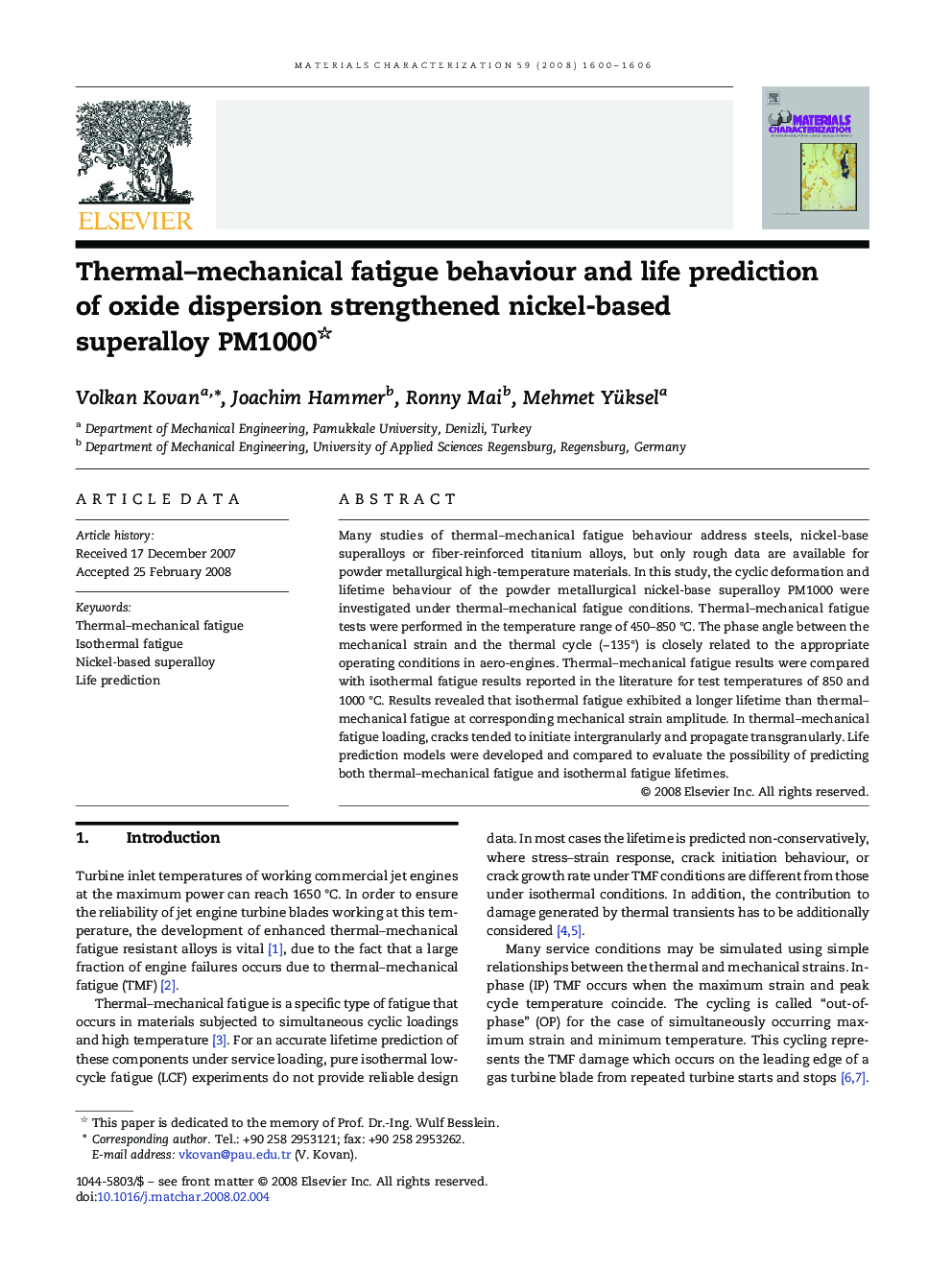| Article ID | Journal | Published Year | Pages | File Type |
|---|---|---|---|---|
| 1572369 | Materials Characterization | 2008 | 7 Pages |
Many studies of thermal–mechanical fatigue behaviour address steels, nickel-base superalloys or fiber-reinforced titanium alloys, but only rough data are available for powder metallurgical high-temperature materials. In this study, the cyclic deformation and lifetime behaviour of the powder metallurgical nickel-base superalloy PM1000 were investigated under thermal–mechanical fatigue conditions. Thermal–mechanical fatigue tests were performed in the temperature range of 450–850 °C. The phase angle between the mechanical strain and the thermal cycle (− 135°) is closely related to the appropriate operating conditions in aero-engines. Thermal–mechanical fatigue results were compared with isothermal fatigue results reported in the literature for test temperatures of 850 and 1000 °C. Results revealed that isothermal fatigue exhibited a longer lifetime than thermal–mechanical fatigue at corresponding mechanical strain amplitude. In thermal–mechanical fatigue loading, cracks tended to initiate intergranularly and propagate transgranularly. Life prediction models were developed and compared to evaluate the possibility of predicting both thermal–mechanical fatigue and isothermal fatigue lifetimes.
